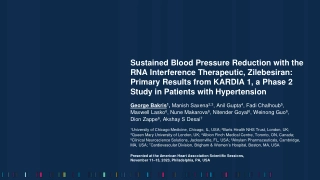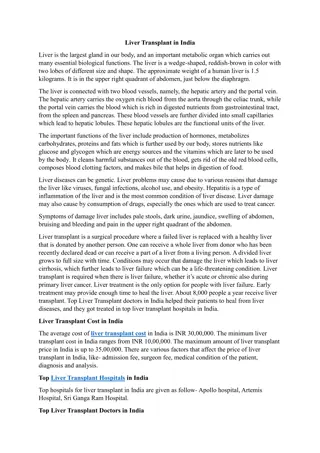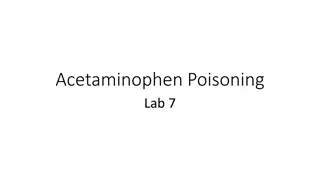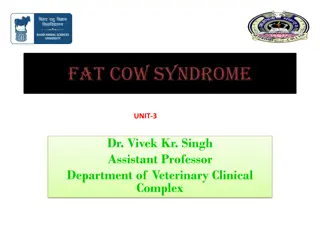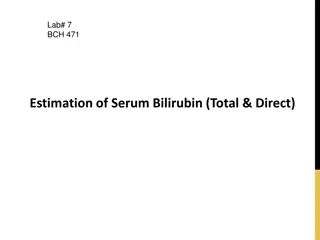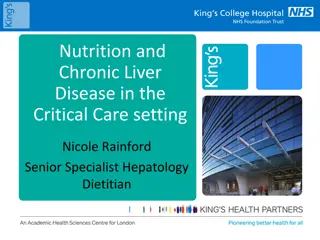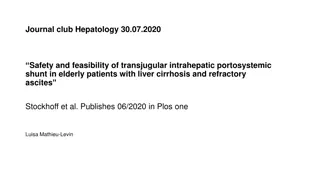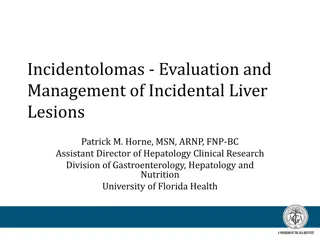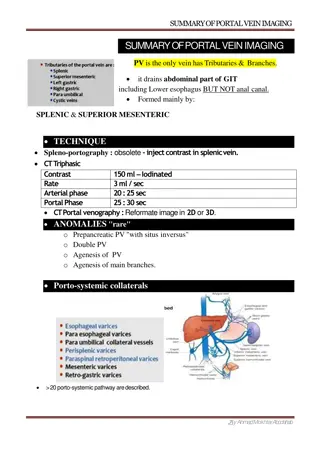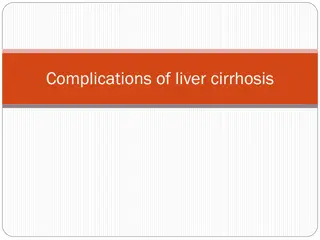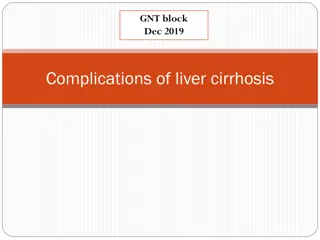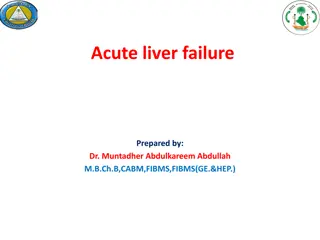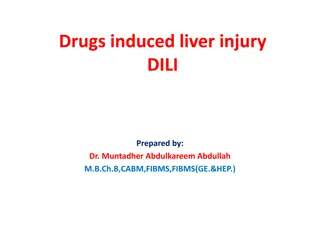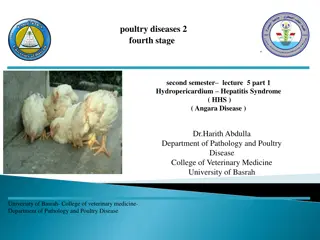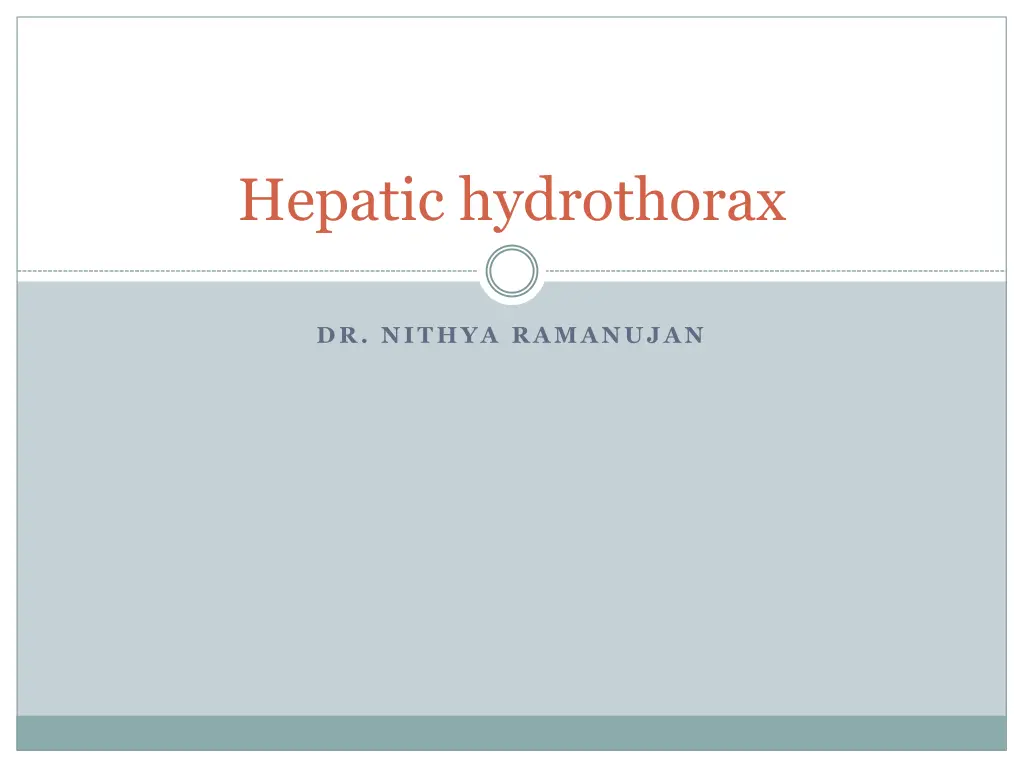
Understanding Hepatic Hydrothorax: Causes, Symptoms, and Diagnosis
Hepatic hydrothorax is the presence of pleural effusion in cirrhotic patients, causing symptoms such as dyspnea, cough, and chest pain. Learn about its pathogenesis, clinical features, differential diagnosis, and investigative procedures.
Download Presentation

Please find below an Image/Link to download the presentation.
The content on the website is provided AS IS for your information and personal use only. It may not be sold, licensed, or shared on other websites without obtaining consent from the author. If you encounter any issues during the download, it is possible that the publisher has removed the file from their server.
You are allowed to download the files provided on this website for personal or commercial use, subject to the condition that they are used lawfully. All files are the property of their respective owners.
The content on the website is provided AS IS for your information and personal use only. It may not be sold, licensed, or shared on other websites without obtaining consent from the author.
E N D
Presentation Transcript
Hepatic hydrothorax DR. NITHYA RAMANUJAN
Definition Presence of pleural effusion(usually>500ml) in a pt with cirrhosis without other causes (cardiac, pulmonary or pleural disease 5-15% of pts with cirrhosis Even mild pleural effusion (500ml) cause severe symptoms (while 5-10L ascitic fluid produce mild symptoms) Occurs when absorptive capacity of pleural space is exceeded
Pathogenesis Passage of ascitic fluid peritoneal cavity pleural cavity diaphragmatic pores Defects <1cm (or microscopic) Tendinous portion of diaphragm More in Rt hemidiaphragm (Lt hemidiaphragm is more thicker and muscular) Negative intrathoracic pressure generated during inspiration Increased intraabdominal pressure
Right sided : 73-85% Left sided : 13-17% Bilateral : 8-24%
Clinical features Dyspnea Non productive cough Pleuritic chest pain Fatigue(hypoxemia) Signs of ascites(abd distension) Signs of cirrhosis Asymptomatic
Differential diagnosis Diagnosis Documentation of pleural effusion& exclusion of alternative diagnosis Cardiopulmonary d/s Chylothorax Tb Malignant effusion Hemothorax
Investigations Chest xray- PA /lateral view Ct chest- mediastinal, pleural or pulmonary lesion Echo cardiac cause USG abdomen+doppler liver masses, patency of PV &HV, ascites Intraperitoneal injection of radioisotopes 99mTc-sulphur colloid,99mTc-human s.albumin Shortly after thoracocentesis Thoracocentesis and fluid analysis
Fluid analysis Cell count, DC (PMN<250 cells/mm3) Hct Gram stain, AFB Culture(direct inoculation at bedside is preferred) Protein, albumin,LDH Bilirubin pH TGL(chylothorax) TB PCR Amylase Cytology
Serum- albumin, LDH, bilirubin, Hct Pleural effusion from portal HTN are transudative Low protein(<2.5g/dL) High serum-pleural fluid albumin gradient(>1.1g/Dl)
Complications Refractory hydrothorax SBEM Death
Refractory hydrothorax 20-25% Persistent hydrothorax despite sodium restricted diet & diuretic therapy or develop diuretic related complications Exclude non compliance with Na restiction & diuretic History 24hr urinary sodium excretion <78 mEq
Spontaneous bacterial empyema(SBEM) Criteria Positive pl. fluid culture and PMN cell count>250 or Negative pl. fluid culture and PMN cell count>500 No e/o pneumonia on CXR Pathogenesis Seeding of PE with bacteria directly from abd cavity Bacteremia
13-16% E.coli, steptococcus sp, enterococcus, klebsiella, pseudomonas Treatment IV antibiotics 3rdgen cephalosporin( Xone 2g iv od 7-10days) Inj Levoflox Changed acc to C&S Slow recovery- repeat thoracocentesis
High mortality even with antimicrobial(20%) Poor outcome predictors High MELD-Na score Initial ICU admission Initial antibiotic treatment failure
Management Alcohol abstinence Dietary sodium restriction Diuretics Therapeutic thoracocentesis Tx of refractory hydrothorax Others Splanchnic vasoconstriction Treatment of infection(SBEM)
Refractory hydrothorax Serial thoracocentesis TIPS Pleurodesis Thoracoscopic Sx for diaphragmatic defects Liver transplantation
Diuretics Sodium restriction <2g/day Avoid NSAIDs- sodium retension, renal failure Mild-moderate symptoms along with diuretics Frusemide 4omg od and spironolactone 100mg od Double the dose every 3-5days Maximum frusemide 160mg and spironolactone 400mg
Therapeutic thoracocentesis Most effective for large effusion(>1.5L) No more than 2L removed at a time(risk of pulmonary odema, hypotension) Complications- pain, pneumothorax, hemothorax, vasovagal episode, hemoptysis, air embolism, laceration of liver or spleen, empyema, subcutaneous emphysema In pts requiring thoracentesis every 2-3wks- alternative should be considered
?? Chest tube insertion Not preferred Only in pts with SBEM and frank pus, pts udergoing pleurodesis Massive protein & electrolyte depletion, infection, renal failure, bleeding Impossible to remove tube because of rapid reaccumulation Complications s/c emphysema, lung liver spleen & stomach laceration, hemothorax(intercostal aretry laceration), misplacement into abd cavity, high mortality
Transjugular intrahepatic portosystemic shunts Response rate 70-80% Reserved for Child pugh score 13 No C/I for TIPS Younger than 70yrs No hep encehalopathy
Contraindications Relative Absolute Congestive heart failure Severe TR Severe pul HTN (MPP>45) Polycystic liver d/s Active sys. infection Biliary obstruction Hepatic tumors Obstruction of all HV Hep encephalopathy PV thrombosis Thrombocytopenia (<20,000/ L) Moderate pul HTN
Complications Technical- cardiac arrythmia, traversal of liver capsule Portosystemic encephalopathy TIPS stenosis Risk factor for mortality after TIPS Child pugh score>10 Pre TIPS MELD score> 15-17 Elevated pre TIPS Cr Lack of response in hydrothorax
Pleurodesis Rarely done In pts whom no other option available Chemical pleurodesis or talc poudrage Difficult form of nonmalignant pleural effusion to be treated with chemical pleurodesis Adverse effects- fever, renal failure, pneumothorax, hepatic encephalopathy
Thoracoscopic repair Pleural flap or surgical mesh reinforcement High mortality in decompensated cirrhosis Option in Pts who are not TIPS candidates Low MELD score
Liver transplanation Pts with hepatic hydrothorax typically have ESLD Definitive treatment

